Useful Wildlife Watching Tips to Enjoy Nature Safely
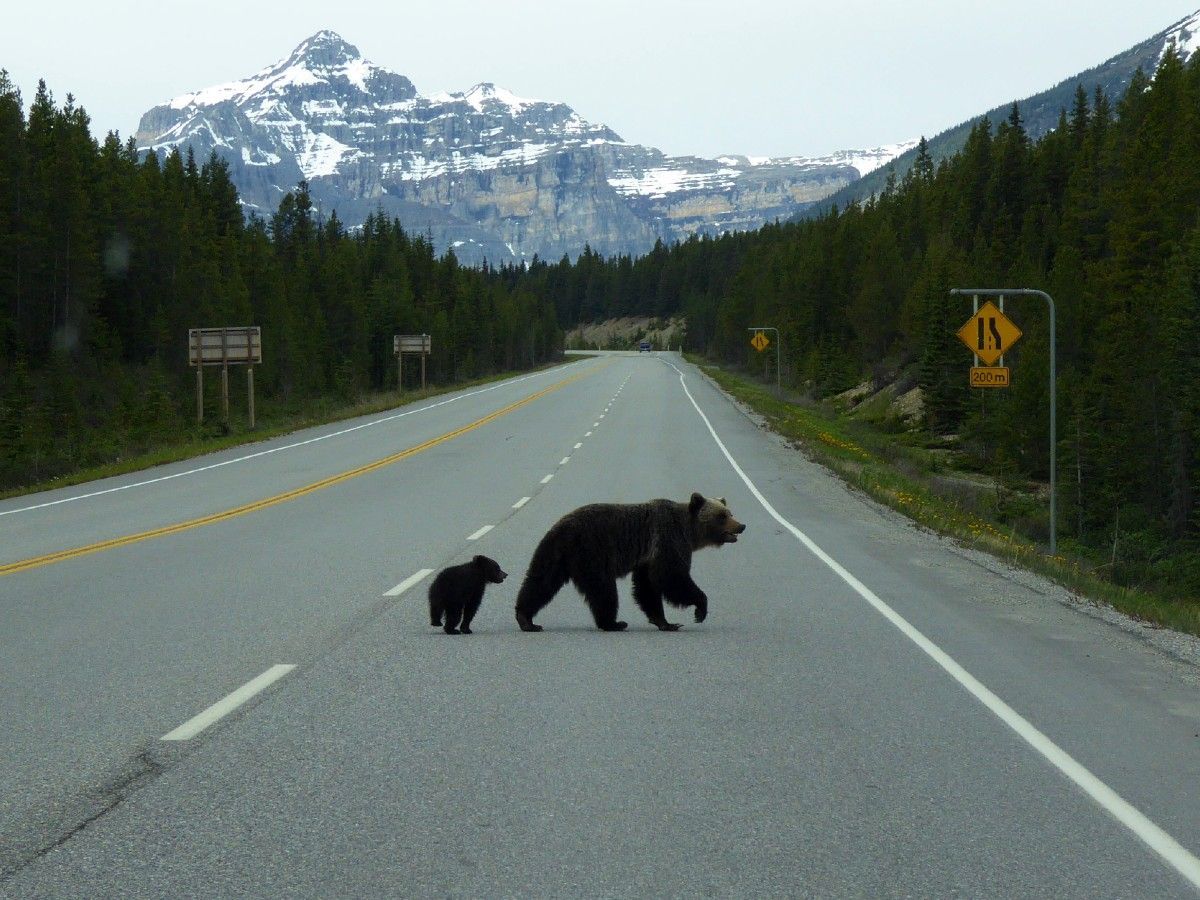
It is a truly powerful moment to be able to see a magnificent creature grazing through its natural environment. I watch a lot of wilderness documentaries and love to learn new facts about animals. But I know like-minded nature enthusiasts will understand me when I say that the best highlights of my camping trips and hikes are animals that I have spotted during my adventures.
In this article, I want to share some tips that might help you see some wild animals in the great outdoors. As well as share the information you should follow to help keep you and the wildlife safe.
Tips to increase your chances to see wildlife
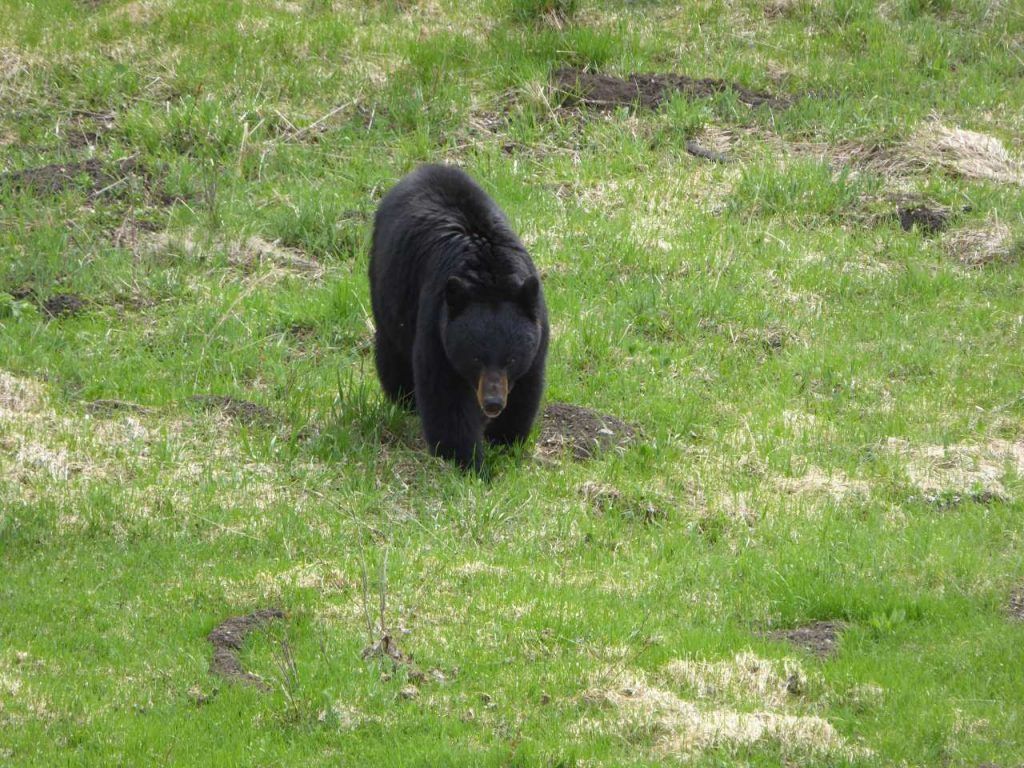
Research the destination
- Even if your main goal is going on a hike and spotting wildlife is a secondary highlight, you might want to research the destination you are going to. This will help you understand what kind of wildlife lives there and where you should be looking for it.
- The research will also help you to understand what kind of dangers are there. For example, if there are bears in the area, you should bring a bear spray. If there are elk or deer and it is their mating season, you should make sure you are always keeping your distance as they can get agitated and aggressive.
Look for elements that attract wildlife
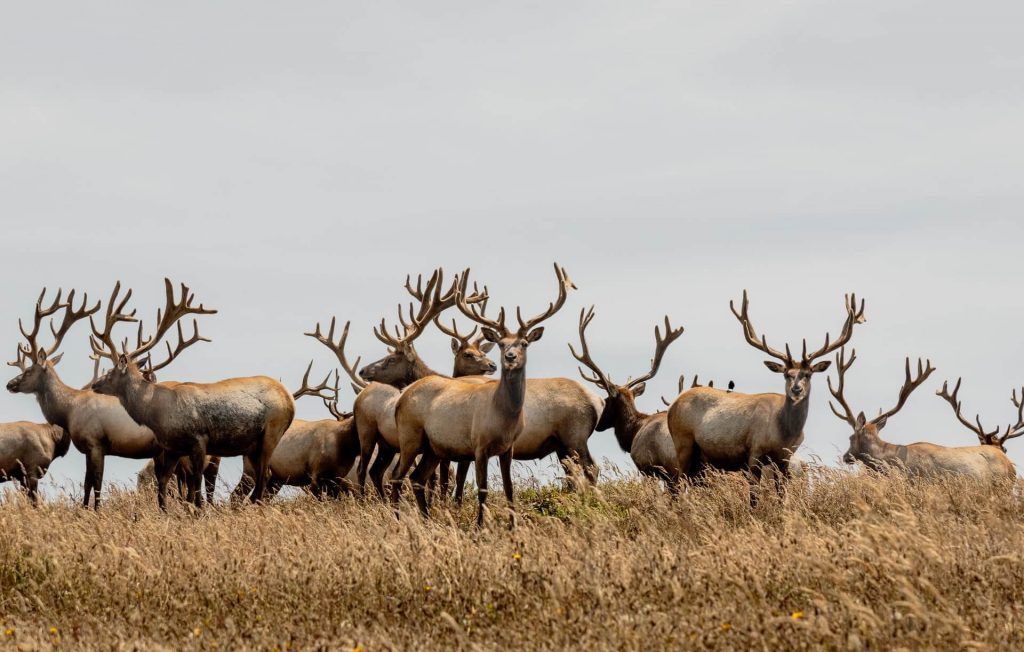
- Berries will attract birds and smaller animals, but they can also attract big mammals like black or brown bears. A good tip here is – if you can spot animals from afar, you might want to spend more time in these areas during the berry season. But if you are hiking out in the wilderness where there are bears around, I would recommend not to stay too long in areas rich with berries.
- Water sources are good spots to see some wild animals as they come for refreshment.
- You can often see birds around bodies of water.
- Farming fields are a great place to spot birds that prey on rodents. Especially, when there’s actual work carried on that disturbs the fields. The rodents in the ground get confused and exposed, and the birds hunting them have adapted to follow the tractors and pick out their prey easily.
- Roads and highways are a great spot to see birds of prey, often due to roadkill caused by cars.
- You can often spot birds of prey on hay bales and field poles near farms, as this is a great place to get rodents for them.
Bring the right tools and gear
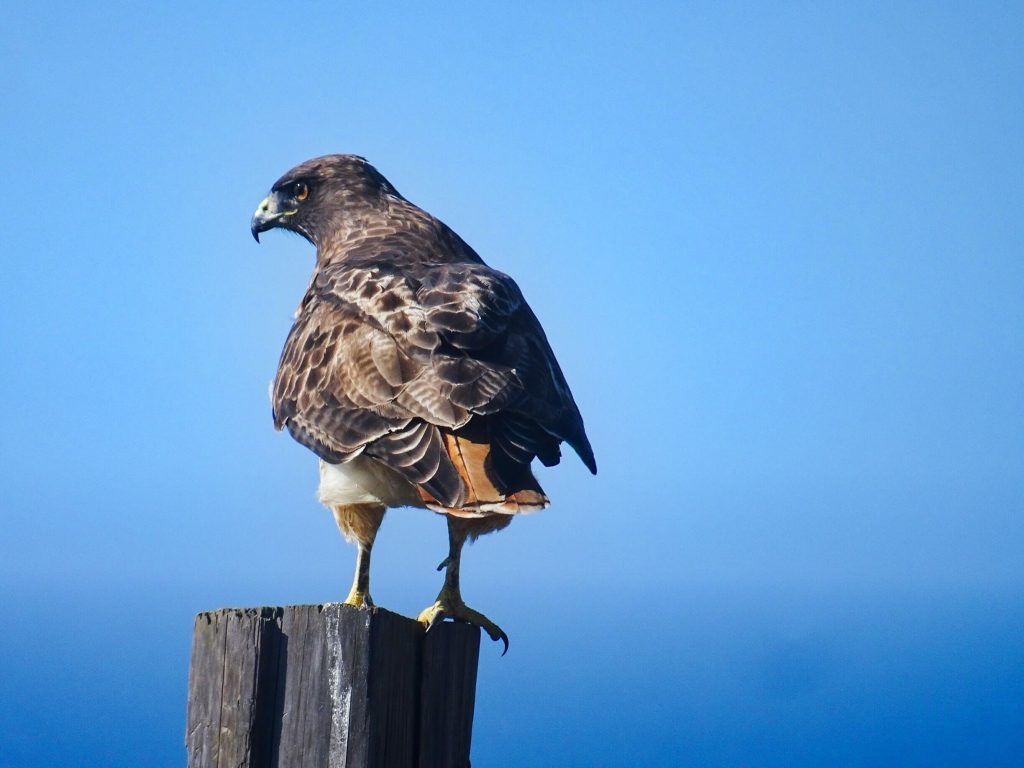
- Bring binoculars to see potential wildlife in the distance. The easiest way to see birds is while they are on the ground and moving close to them will scare them off.
- Bring a camera with a good lens, to be able to take an image of wildlife in the distance. I will be honest here, I don’t have a DSLR, but I always carry my compact zoom type camera. It is usually enough to take an image of an animal far away. But it’s very hard to get a good quality image as the images are often dark and blurry. Then again, I am not a photographer and just want them for memories.
- Wearing earth-toned clothes will help you to blend in with the environment. Animals are wary of people and will often try to leave the area if they see you there.
Use the right behavior
- Stay still and quiet. You might have seen animals freezing for some time when they hear or see something. Make sure you stay still and quiet until they are comfortable to continue to do what they were doing before.
- Patience and luck are very important. You might have to stay in the same spot for a while without making any noise. But sometimes even that won’t help you. Often wilderness areas are so vast, it might just be that the animals are somewhere else on that day.
- Check the wind direction. If you are trying to spot an animal, make sure the wind is coming towards you. If the wind is blowing from behind, animals in front of you will get your scent and might leave the area.
Important note: these tips are for those people who are set out to spot wildlife and know the risks of what kind of animals they might encounter. If you are backpacking or hiking in areas that have bears and cougars, you should not remain quiet or try to hide your sense. Make as much noise as possible to make sure the wildlife knows you’re there.
Look for shapes, color contrast, and movement

- Look for anything that disturbs the natural landscape. You will often spot birds of prey on farm poles and hay bales because it’s easy to spot a dark object that falls out of the contrast of the area surrounding it.
- Look for darker clusters on the trees; those often are birds sitting on the branches or their nests.
- Deer and elk are often spotted in herds, so look for spread clusters of grey or dark brown in the fields.
- I spotted most bears scanning through the bushes and trees along the roads, where I would often see them enjoying some berries or roots. Once your eye lands on a bear, you will know you saw it, even if that happened for a milli-second as you were driving by.
- Listen to the sounds of breaking branches and footsteps around you. If an animal is not hunting or being hunted, they are usually more relaxed about the noise they make. And just by hearing the weight of the breaking branches, you can figure out the size of the animal that has caused it. After I heard a noise of cracking branches in a national park once, I knew that wasn’t a squirrel or a bird. And moments later, a beautiful black bear stood up on its two feet to check who was invading its space.
- Look for any movement. Once you see a moving object in the wilderness, it becomes easy to recognize it and follow it with your eyes.
Choose the right time and location
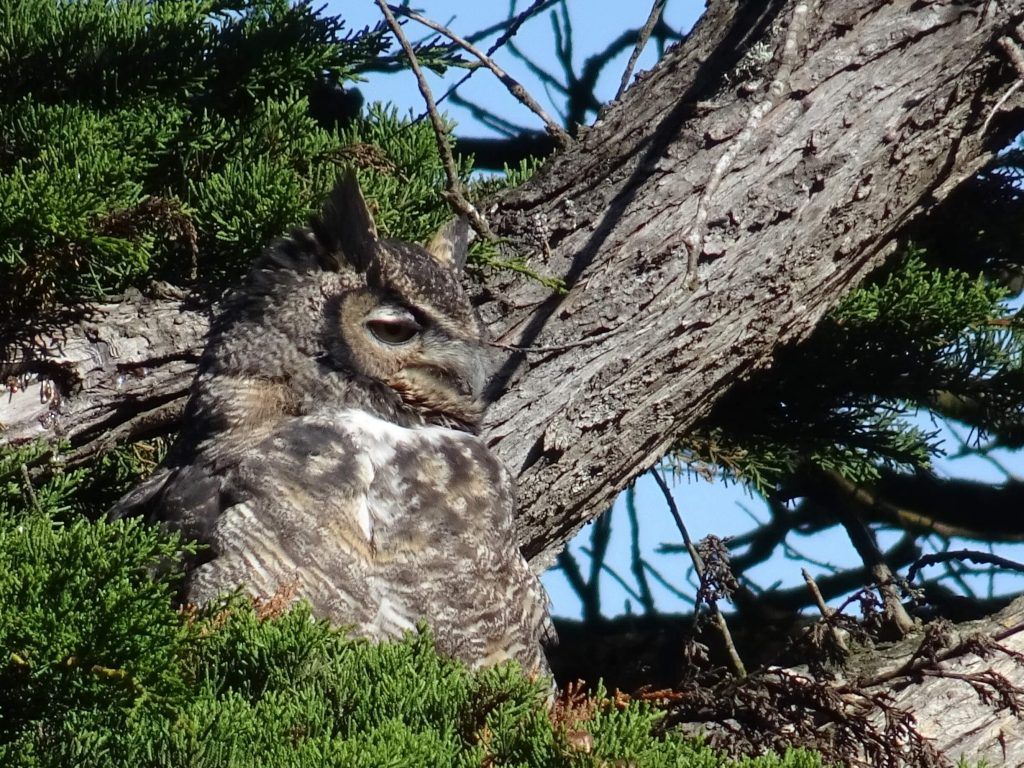
- The edges between forests and meadows or plains are some of the best spots to spot wildlife. Meadows are the food source, and the forest gives animals shade and protection. So, the animals will often stay tight on the edges of the two.
- Look for places that are less frequented by humans. It may mean that you won’t be able to set your foot in these areas, but often there are turnout points where you can park the car. Take out your optic zoom lens or binoculars, and set up an excellent wildlife watching spot. For example, most of the animals I saw in Yellowstone National Park were in the meadows right next to the highway.
- Your best chances of seeing wildlife are early in the morning or in the evening. That’s when the animals are most active. They hunt, look for food, and graze the plains.
- Driving is one of the best ways to spot wildlife. When I am camping, I often get into my car in the evening and drive on dirt-roads or less popular highways. This has been a great way to spot bears, prey birds, coyotes, and other animals that either try to cross the road or are hanging around the edges between the forest and the road.
Tips to keep you and the wildlife safe
While wildlife spotting is an amazing experience for me, I always follow the rules that not only keep me safe but also protect the animals around me. These are some things to always have in mind:
- Always leave space for wildlife. Do not approach animals, no matter if they are carnivores or herbivores. Keep at least 100 meters (330 ft) from predators like bears, coyotes, or cougars and at least 50 meters from elk and deer. I would recommend keeping a larger distance (at least 100 meters) from a bison. Remember this bison attack story? Note how close the tourists got to the animal. This is just how the animal will behave and is in no way its fault or the fault of the park authorities. People should be charged for this behavior.
- Do not feed wildlife. I can’t tell you how important this is. A fed wild animal will change its behavior immediately. It will start assuming people with food and get aggressive against humans when they can’t get it from them. Park authorities often must kill the animals that have gotten food from people. By feeding a bear, a wolf, or any animal, you are giving this creature a death sentence.
- Do not approach even small wildlife as there are also a lot of diseases that spread from humans to animals and then make their way back to humans. For example, squirrels and chipmunks in Yosemite are so used to people feeding them, they have become bold and can even try to steal your food from you. This can often cause them to scratch or bite. But did you know that many of the rodents in California carry a plague that can cause huge harm and even death to humans?
- Do not stop your car if you spot an animal near the road. Not only this can cause danger to you and other people on the highway, but it will also cause huge stress to the animals.
- Keep the food safe from animals when you’re camping. Store it in bear lockers or your car. Do not leave your food in plastic coolers assuming a bear cannot get into it. Just look at the picture below.
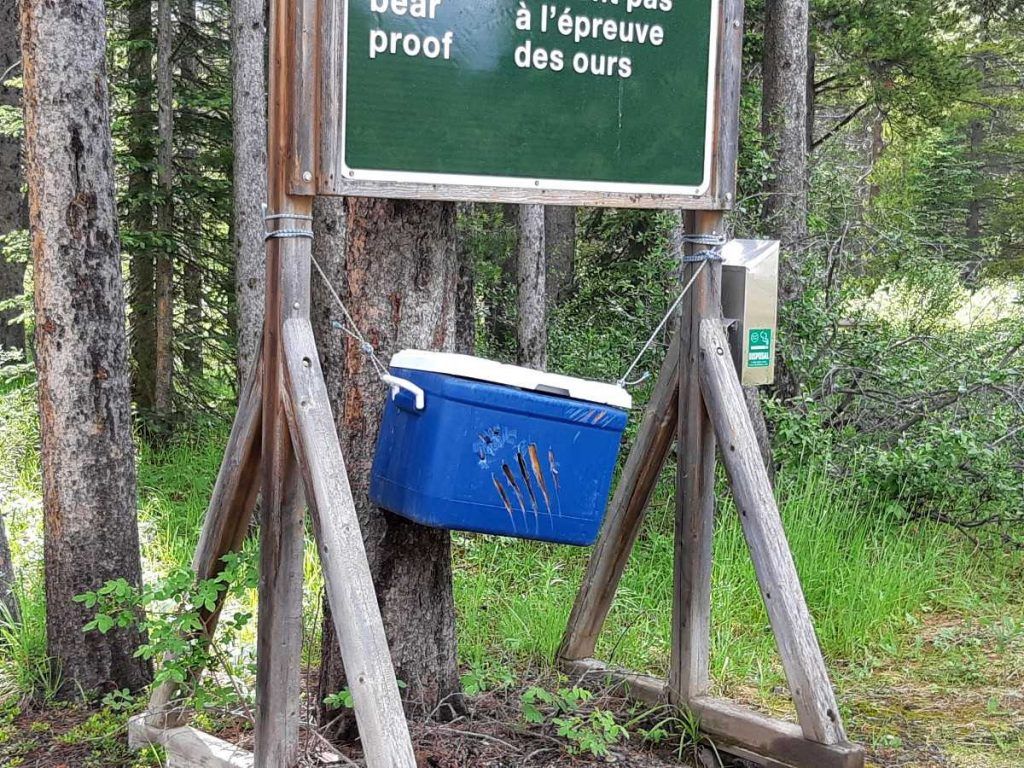
If you cannot grasp how strong a grizzly is, just imagine, a grizzly is able to take down a bison.
- Avoid animals that look injured or behave aggressively. Try to read the situation. The animal might have had an encounter with a predator, might carry disease, or be under stress.
- For the best wilderness spotting opportunities, leave your pets at home. Dogs may stress other wildlife. They can also attract bears and cougars. Bears see your dogs as natural enemies while cougars can see your pet as a meal.
I hope this article will help you find some ideas on how to spot amazing wildlife and keep you and the animals safe while you’re doing it. If you have tips you want to share here, please let me know in the comments below or email them to me, and I will make sure to add the ones that are useful to this article.
Check out other related articles:
